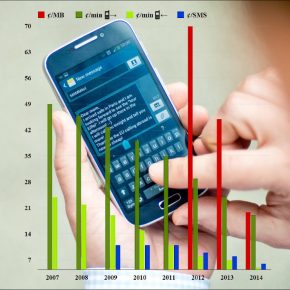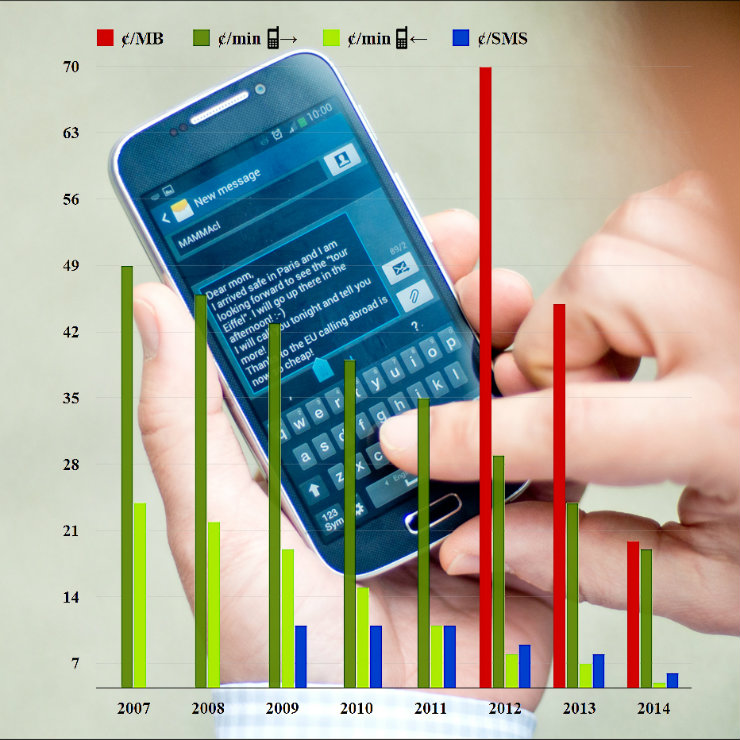Tydzień w gospodarce
Category: Raporty

(European Parliament, CC BY-NC-ND)
Such was the decision of the European politicians in autumn 2015. EU citizens accepted this fact with satisfaction and great hopes that during holiday or a business trip to any EU country they would be able to use their mobiles in the same way as they do at home on a daily basis and without being concerned about having to pay a huge bill. There was no enthusiasm on the part of operators, just as when the European Commission started to regulate and reduce prices of basic mobile roaming services in 2007 after almost two years of discussions with the telecommunications industry. This time, mobile networks, which had adjusted their price lists to the EU regulations in the past, decided to search for loopholes which would make the “Roam like at Home” (RLAH) rule friendlier for them.
Since the very beginning, operators have claimed that cheaper roaming services not only reduce their revenues but, in addition, limit their profits. They argued that they would be unable to invest in network extension and improvement of service quality and, consequently, clients would lose out. And they made clients pay heavy charges for calls. In May 2007, a Bulgarian and Romanian calling home from the United Kingdom paid EUR9.52 and EUR7.95, respectively, for a four-minute call. Receiving an equally long roaming connection in the United Kingdom cost them EUR5.47 and EUR3.17, respectively. A Pole calling home from Spain in March 2006 paid EUR5.73 for a four-minute call, whereas in May it was already EUR11.34.
The European Commission, which was not thinking of a single telecommunications market at that time, decided to change it. At first, it tried to convince operators to introduce voluntary reductions and, following the failure of this idea, it imposed maximum prices by means of the regulation.
In April 2006 a significant scene took place in Warsaw during the meeting of Viviane Reding, the commissioner responsible for telecommunications at that time, and Polish operators. Jerzy Sadowski from Polkomtel (mobile operator), acting as a representative of the Polish Confederation of Private Employers, stated that in the case of introducing price regulations in an intra-EU roaming, Polish mobile operators would subsidize operators from richer countries.
The response of the commissioner was surprising for Polish operators: “In each country I visit all operators say: everybody is going bankrupt. Challenging the subject of roaming I was aware that the resistance of operators would be strong. However, it was impossible to withhold these decisions any longer,” commissioner Reding concluded.
Further on, during her statement she summarized the Commission’s activities undertaken so far and the operators’ response, which was symptomatic. “In 18 countries prices practically did not change. In four they increased, and in the remaining three they dropped insignificantly. Such prices are not acceptable anymore! British Ofcom even called on UK citizens to leave their mobile phones at home in order to prevent their exposure to costs. This is where our initiative stems from. We do what the European Parliament expects us to do, what citizens of the European Union expect,” she said.
A year after that meeting, the Commission ordered the operators to introduce euro tariffs in which they were not permitted to charge more than EUR0.49 (plus VAT) per minute from clients for an outgoing call, and more than EUR0.24 per minute (plus VAT) for a received call. The regulation issued at that time was effective for three years, and in the summer of 2009 it brought down the price of a minute of an outgoing call to no more than EUR0.43 (plus VAT), and an incoming call to EUR0.19 (plus VAT). The consecutive three-year regulation reducing prices covered not only prices of calls but also those of SMS and data transmission. The latter were regulated only at the wholesale level. Having done that, the Commission did not cease its activities and the regulation process of roaming prices continued, both in the case of retail prices paid by consumers and wholesale ones, used among operators. At the beginning of June 2017, prices of calls and SMS were approximately 90 per cent lower than on the introduction of the first regulations.
In 2013, the Commission announced the waiver of roaming fees and in October 2015, the European Union authorities decided that, as of 15 June 2017, prices of calls, SMS and data transmission should be the same as in the case of domestic services.
Determining what the RLAH should look like in reality took a year and a half. Discussions dealt, among others, with the protection of operators’ interests against abuse, such as the purchase of subscription or a pre-paid card in a country with a low service price and its permanent use in a country where prices are higher. At the same time, an attempt was undertaken aimed at protecting the interests of those clients who live in one country and work in a neighboring country, or are seconded to work abroad. Efforts were also made to take into account operators’ interests.
The first “final” version of the new roaming rules – containing an idea of a 90-day annual RLAH limit strongly favoring operators – announced by the Commission at the beginning of September 2016 – ceased to be valid only four days later. On announcing the next version, the discussion focused on wholesale prices, including, in particular, data transmission. Countries where such services are cheaper and states visited by fewer tourists and businessmen than those travelling out of them expected the lowest prices feasible. The reason is that they claimed that expensive wholesale services would force them to raise domestic prices. Tourist states and the Western European countries opted for higher prices. The final decision of politicians is closer to the expectations of the south and the west rather than those of the north and the east of Europe.
Besides the protective measures, such as the Fair Use Policy and the mechanism allowing to determine the size of the package of data to be used in roaming, based on the subscription price and wholesale roaming prices, the operators were also left an option to ask the local regulator for the possibility to introduce an additional fee on top of the domestic prices. They may introduce such a fee once they have proven that they will incur permanent losses on roaming services.
The practice of recent weeks shows that in many European Union countries the road leading to the RLAH is a thorny one. The operators have demonstrated that they are able to approach regulations carved out in Brussels in a creative way, including their practical interpretation presented by the European Commission and BEREC, a pan-European telecommunications regulator.
“The lack of a consistent approach among operators in individual countries has led to considerable diversification and fragmentation of services offered. Even large groups of mobile network operators acting in several countries are not consistent in terms of their approach,” claims Piotr Mieczkowski, telecommunications expert from EY Business Advisory.
In Denmark and Ireland, operators used the introduction of the RLAH to raise local prices in some tariffs. In Lithuania, on the request of operators, the regulator granted them the possibility to apply surcharges on calls and data transmission. The regulator was also asked about the possibility for Estonian Elisa and the Polish MVNO Virgin Mobile Polska to apply surcharges.
The Slovak Orange introduced a new cheap tariff, where the package of data to be used in the home country and in roaming is small – 100 MB – and in the home country the client receives an additional greater data package promotionally. Having used 100 MB of data, the client will pay EUR9 per 1 GB used abroad.
Some operators, such as the French mobile operator Boygues Telecom used changes in European roaming to start a price war on the local market. On the other hand, networks from the United Kingdom extended the RLAH rule to other countries too, including, among others, Turkey and Switzerland.
In many countries, operators offering unlimited calls and SMS in roaming offered monthly packages of free minutes and SMS. They are usually large enough – 1000-2000 minutes or SMS – to prevent clients’ protests. Such an approach was adopted, among others, by Estonian Elisa. Its competitor introduced a new tariff plan under which it offers unlimited calls and SMS in the home country and in EU roaming, limiting the data package in roaming to 6 GB per month. In this plan, no limit on data transmission exists in the home country.
The behavior of operators in Poland is very controversial. At first, jointly with the regulator, they agreed on the RLAH interpretation pursuant to which consumers’ right to calls in roaming free of charge was limited to a maximum several hundred minutes per year, whereas the provisions concerning the use of data were completely disregarded; subsequently one of them – Orange Polska – announced that they would offer the RLAH to their contractual clients anyway. Other operators presented tariffs in the shape previously agreed, which made clients strongly disappointed. Observing clients’ disappointment, two operators announced changes in their price lists.
The regulator, having been involved in earlier arrangements with the operators, issued a declaration in which it stated that it would respond to price lists presented by the operators “in compliance with the procedure envisaged in the Regulation (of the European Parliament and of the Council – editorial note)” and warned that it may impose penalties on the operators should any infringement of the European Union rules be detected.



